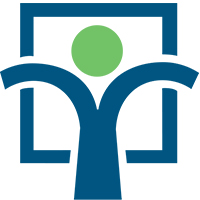
High net-worth (HNW) families in Ontario and their advisors will want to review the province's new tax rate that takes effect July 1. Anyone whose taxable income exceeds $500,000 ó 25,000 high-income earners or 0.4% of Ontario taxpayers ó will see his or her tax rate go up by 2%. But concerns are mounting that the new tax, which was meant to boost Ontario's lagging tax revenues and reduce the deficit, may have unintended consequences.
The top 1% of Ontario taxpayers already provides 27% of Ontario's income tax revenues. (The bottom 75% provides only 12% of Ontario's tax revenues.) Yet, as of July 1, high-income earners will pay more. Once the 56% provincial surtax is applied to that 2%, the increase comes to 3.1 percentage points, boosting the combined federal/provincial tax rate to 49.5% from 46.4%. Half those amounts will apply in 2012, as the tax takes effect July 1.
But a June 13 report by the C.D. Howe Institute, entitled Ontario's Tax on the Rich: Grasping at Straw Men notes the tax may have unintended longer-term results. Although only a small percentage of Ontario taxpayers, writes the report's author Alexandre Laurin, associate director of research, the targeted HNW families are very important to the personal tax system. If they were lost to other tax jurisdictions, all Ontario residents would feel the impact.
And this is a definite possibility. Economic studies citied in the report note that taxes have a significant effect on behaviour. Given that skilled, high-income individuals are highly mobile, they can respond to higher taxation by moving to lower-taxed jurisdictions (provincial or international).
In addition, HNW families can afford to work with professionals who can initiate more aggressive tax planning, and reduce tax loads by modifying the type and timing of compensation and sources of investment income. The chart below illustrates the difference a move can make; note the double-digit, after-tax return from eligible dividend income, for example, when compared to Alberta. Income modification can also reduce tax burdens.
Prov.
2012 taxable income range
Ordinary
income
(%)
Capital
gains
(%)
Dividends:
Small bus.
corps.
(%)
Eligible
dividends
(%)
BC
More than $132,406
43.70
21.85
33.71
25.78
AB
More than $132,406
39.00
19.50
27.71
19.29
SK
More than $132,406
44.00
22.00
33.33
24.81
MB
More than $132,406
46.40
23.20
39.15
32.26
ON
$132,407 to $500,000
46.41
23.20
32.57
29.54
NS
More than $500,000
47.97
23.98
34.52
31.69
$132,406 to $150,000
46.50
23.25
31.83
32.23
More than $150,000
50.00
25.00
36.21
36.06
Source: Knowledge Bureau, Inc. All rights reserved.
The numbers tell the story: effective tax planning can preserve wealth from this new tax. The C.D. Howe report estimates that, with proper planning, high-income earners will probably reduce their taxable income by about 2% in the short term and by more than 10% in the long run, as planning kicks in. These responses may affect federal tax revenues as well. Most significant, the report concludes, if high-income earners respond by reducing their labour supply and earning less over the longer term, this tax will be ineffective, putting our fragile economic recovery at risk and robbing tax treasuries rather than supplementing them.
It's Your Money. Your Life. Arranging your financial affairs within the framework of the law to pay the least taxes possible is your legal right and duty under the Income Tax Act. Astute tax and wealth advisors will want to work closely with their HNW clients to determine the right response to this new tax and thwart its eroding effect on their incomes and capital. The more effective the planning, the more wealth will be created and preserved, adding to future tax revenues and fighting the eroding effects of inflation and other unforeseen economic events.
Evelyn Jacks is president of Knowledge Bureau, best-selling author of close to 50 tax and personal finance books and keynote speaker at the Distinguished Advisor Conference in Naples, Florida, Nov 11 to 14.
Additional Educational Resources: Client Relationship Toolkit; DFA-Tax Services Specialist designation


